Gravity die casting is the metal casting of aluminum alloys in permanent steel molds
Using gravity die casting for aluminum casting has the advantage of not having to produce molds for each casting and ensures uniform parts for each casting, as with cronite casting, for example. For the customer, this also means that production time can be reduced, which is particularly advantageous when casting large parts and larger quantities.
The mold tool itself is made from steel on machine tools. This allows for rapid cooling during casting, which helps to improve the mechanical properties of the alloy. The permanent ingot molds help ensure uniform parts with each casting, making them ideal for CNC machining, among other things.
Internal shapes are formed using either steel mandrels or sand cores. This method is highly suitable for medium or large series production.
Learn more about the mechanical properties of alloys here: Alloy overview. See examples of molded parts under products
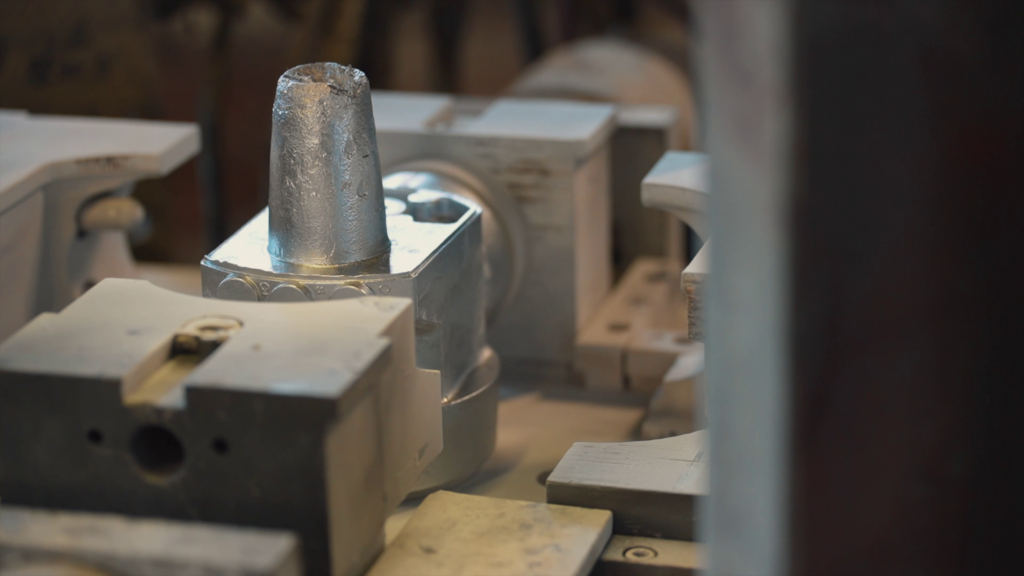
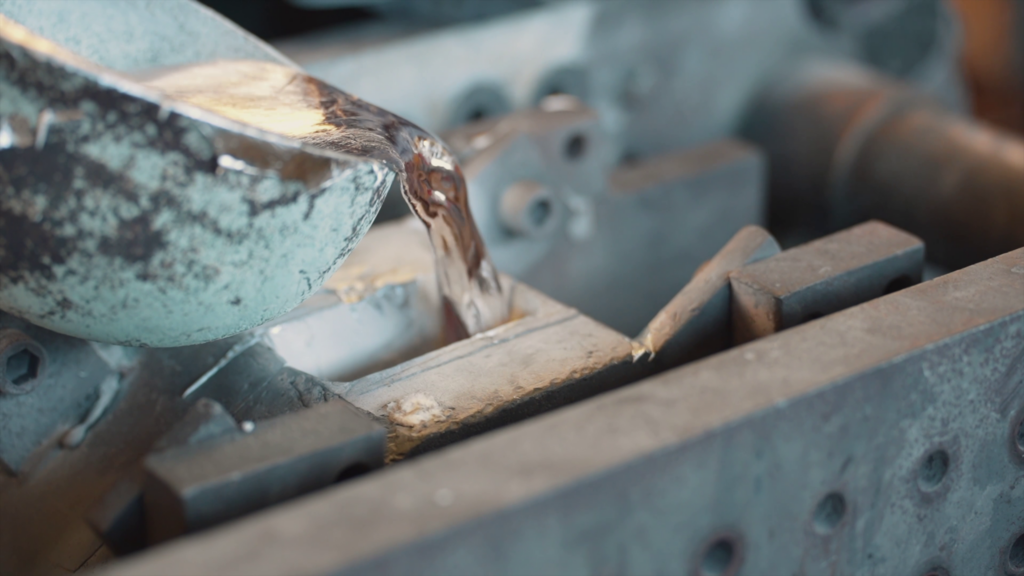
The tool closes and the molten aluminum is ejected via the inlet system.
When the metal has solidified sufficiently, the tool is opened and the cast part is removed. Below: Complicated mold, with 4 parts and 3 mandrel pulls.
After casting, the inlet system is cut off in a programmed cutting robot. The part is fixed in a special fixture or possibly a centering cartridge. The cutting robot can cut at all angles from horizontal to vertical.
Programmed clamping and cutting ensures uniform workpieces that can later be easily clamped in CNC machining centers.
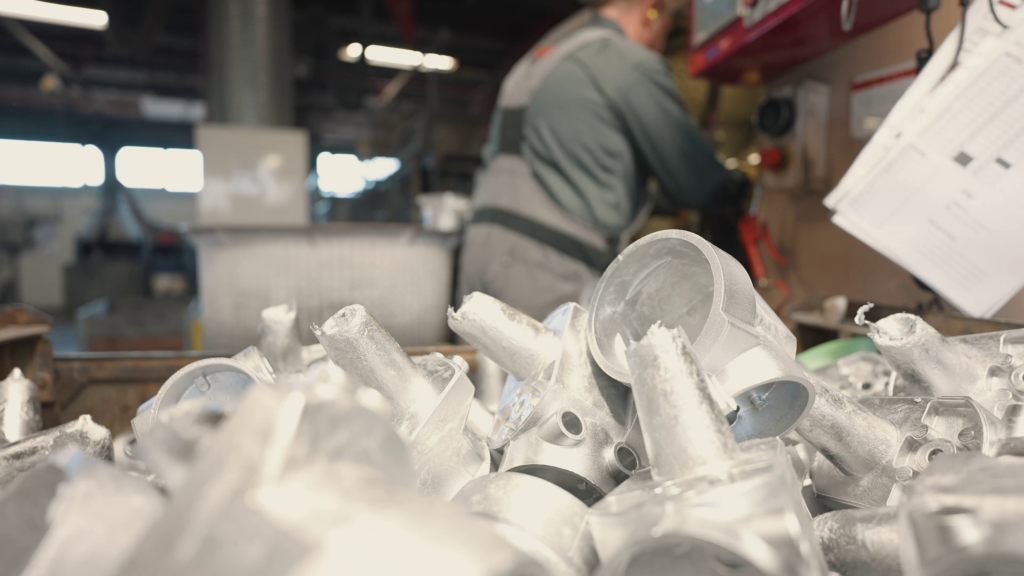
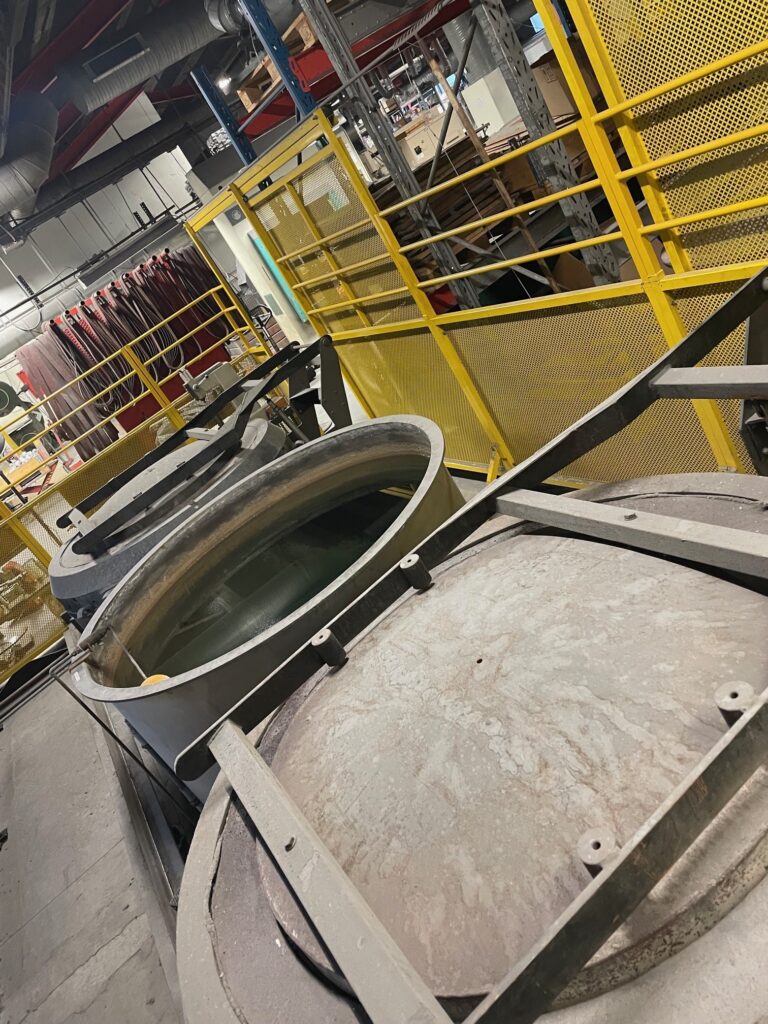
Certain aluminum alloys can be heat treated. T6 heat treatments are performed at our facility.
This consists of:
1. Solution annealing at approx. 525 degrees for 4-6 hours.
2. Roast cooling in water.
3. Maturation heating at approx. 170 degrees for approx. 5 hours
The treatment can be differentiated according to the weight of the goods.
Heat treatment increases strength and hardness by 40-60%.
Alloys that can be heat treated are the following:
– AC-Al Si7 Mg
– AC-Al Si10 Mg
– AC-Al Si9 Mg
– AC-Al Si12 Cu Ni Mg
See more about aluminum under alloys.
At our ingot foundry located at Phønixvej 12 in Hedensted between Vejle and Horsens, we have staff specializing in aluminium casting. Today, we deliver to all of Denmark and Europe.
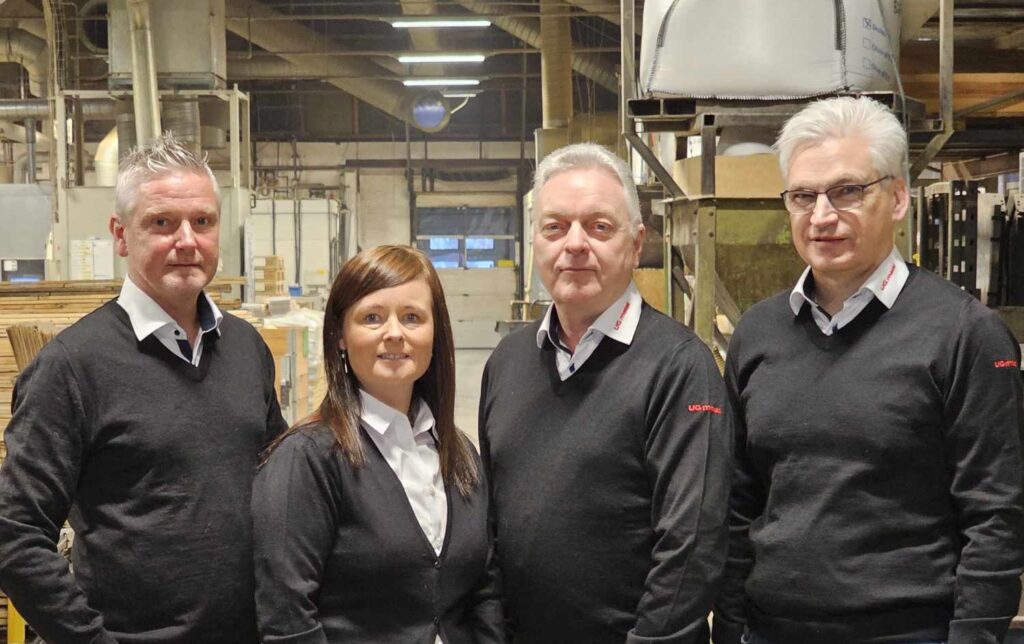
At UG Metal, we manufacture high-quality metal castings, including aluminum:
– Aluminum
– Bronze
– Tin bronze
– Aluminum bronze
– Brass castings
We work with the following casting methods:
– Shell-mould casting
– Sand casting
– Gravity die casting
Yes, we have! At UG Metal we are DS/EN ISO 9001:2015 and DS/EN ISO 14001:2015 certified. If you would like to read more about our certifications, please visit our certifications in the buttom of the page.
UG Metal has more than 40 years of experience and has always been family-owned and is now run by the 3rd generation. This means, that we have built up an enormous know-how in metal casting, especially in Shell-mould casting, sand casting and gravity die casting.
Our company details at UG Metal are:
Th. Udengaards Metalstøberi A/S
Blæsebjergvej 44
8722 Hedensted, Denmark
CVR: 51686519
You can easily get in touch with UG Metal if you need help or have questions about our solutions and products. Send us an email at ug@ugmetal.dk or call us on +45 75 89 16 22.

Th. Udengaards Metalstøberi A/S
Blæsbjergvej 44
8722 Hedensted
CVR: 51686519
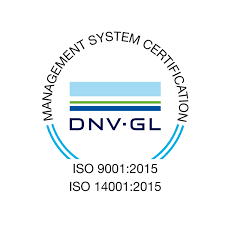
Copyright © 2024 UG Metal. All rights reserved.